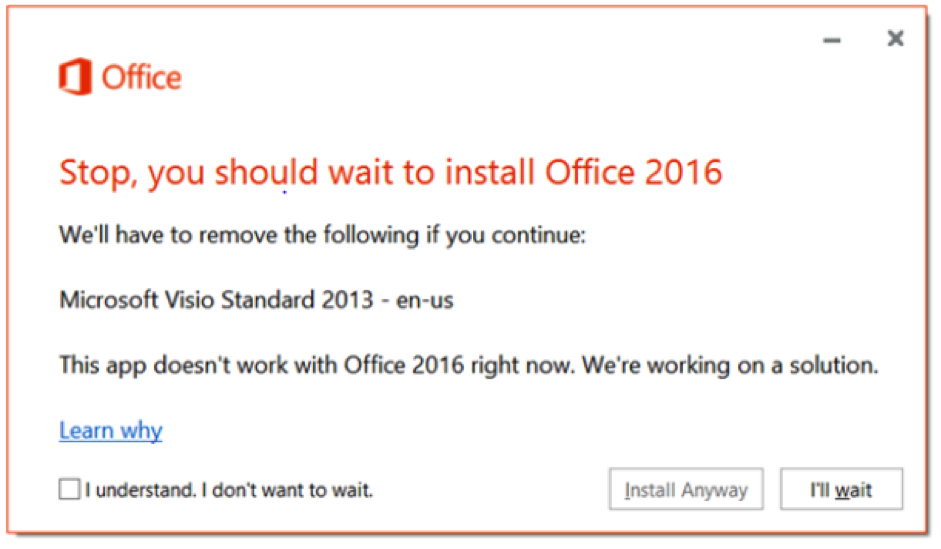Office 365 removes older versions of Office based products
You may need to say bye bye to legacy versions of applications like Visio and Project.
Published on 6th January 2017
A number of organisations who have already gone through this process may have already experienced this, but for those of you who are thinking about upgrading to Office 365, there is a slight bump in the road that you need to be aware of if you want to run Office 365 with previous versions of the likes of Visio and Project.
Firstly, there is the obvious shift from device, perpetual license to user subscription. This means that you no longer own the license, instead you are merely renting the software for an agreed period of time.
Issue impacts standalone and Deferred Channel organisations
If you have a standalone copy of Excel installed for compatibility issues or interaction with another system, then this will fall victim of the automatic uninstall. This error mainly impacts users who are on the Deferred Channel. The Deferred Channel is when an organisation defers the monthly Office 365 updates, and instead updates every four months.
This is a great option for organisations who don’t want to upgrade every month. They may have Office installed on sensitive machines that they don’t want to change too often, or conflicting software that does not work with the latest updates.
Office 365 upgrade automatic removals
When you deploy and upgrade your instances of Office, Office 365 actually removes older versions of Office based software (Office suites, Visio, Project etc) automatically during the install process. This means that users have a shiny new version of Office, but no Visio or Project.
If you try and re-install and use Project or Visio 2010 or 2013, for example, you will be presented with an error like the screen shot below.

Alarm bells will start to ring, as the error clearly states that older versions of Visio and Project no longer works with Office 365. Ah, that could be a problem.
You can try and re-install the legacy applications, but you will have errors in trying to collaborate or share files with Office 365 and the older versions of the software. In some cases, it simply does not work.
There have also been reports of the reverse happening; installing the new version of Visio or Project and having the likes of Office 2013 or 2010 automatically removed!
This causes a major headache for organisations that have a major investment in Visio and Project or a large quantity of installs. What should you do?
Your options
If you have your legacy Visio and Project applications covered under Software Assurance (SA), then you are entitled to the latest version. This allows you to remove the 2010 or 2013 versions, and install the Visio/Project for Office 365 versions. Remember, this will be a shift from device licensing to user subscription.
Microsoft also have a special offer for people wishing to upgrade their licenses. It’s actually a free upgrade, if you meet the terms and conditions. Microsoft states “This offer only applies to standalone Office 2013 products purchased via an authorized Microsoft retailer; standalone Office 2013 products purchased via Microsoft volume licensing agreements are excluded from this offer”. So, if you have some sort of MVL then you can’t claim your free upgrade.
If you do qualify for the free license upgrade, then you better get your skates on as you have until February 2017 to claim your new licenses.
If you have some form of MVL and don’t have Software Assurance on your older copies of Visio and Project, then it appears that you will have to purchase a new license for the latest version if your users still require the software. Naturally, this could be a large expenditure, so check your current Microsoft agreement, make sure all of your legacy Visio & Project users still need the software (internal review), and budget for new licenses.
Of course, the other option is to do nothing and look on the market for an alternative that will work with Office 365 and may be cheaper!












